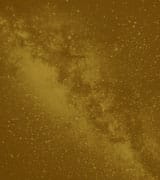Astronomical Ephemeris – February, 2022
Astronomical Ephemeris – February, 2022
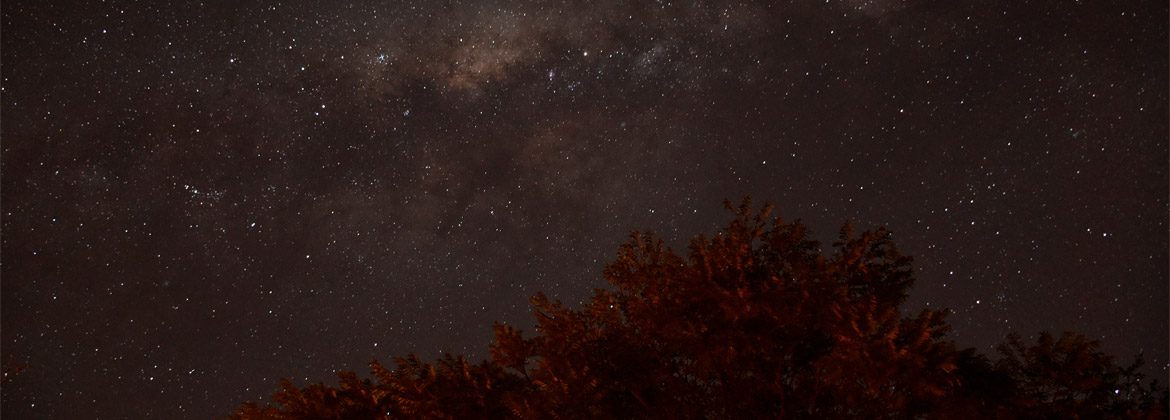

In the observation with the naked eye of the night sky of the second month of the year, we will have the opportunity to appreciate Venus, Mars, Mercury and Saturn (more towards the end of the month), as well as the Moon, of course, fulfilling its cycles through its orbits and keeping our solar system in balance.
Moon phases
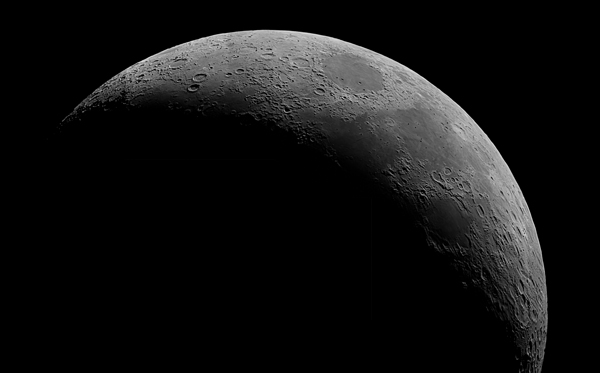
February 1 – New Moon
February 8 – First quarter
February 16 – Full Moon
February 23 – Last quarter
Conjunctions in February
As we have observed, the conjunction phenomenon – the apparent view that two or more celestial bodies appear to be close to each other in the sky, when observed from here on Earth – is always present in the cosmos.
Notes:
Despite being apparently quite close together in the sky, the Moon and Venus, the Moon and Saturn, and the Moon and Jupiter will not fit within a telescope’s field of view, so they can only be observed with the naked eye or with binoculars.
The angles and cardinal points mentioned here refer to the geographic coordinate of the observer’s position in the city of São Paulo/Brazil.
February 12
Conjunction between Venus and Mars
At dawn on the 12th, Venus and Mars will be in conjunction when Venus passes at 6°3′ north of Mars, at 32° (variable angle according to the observer’s geographic location) above the horizon line towards the east.
We will be able to observe the celestial pair from approximately 3:40 am (Brasilia -3UTC) until dawn, when the morning light will no longer permit its visibility, around 5:30 am (Brasilia -3UTC).
Venus will be at an apparent brightness of -4.8 magnitude and Mars at 1.4 magnitude. Both in the constellation of Sagittarius.
Observable all over the world.
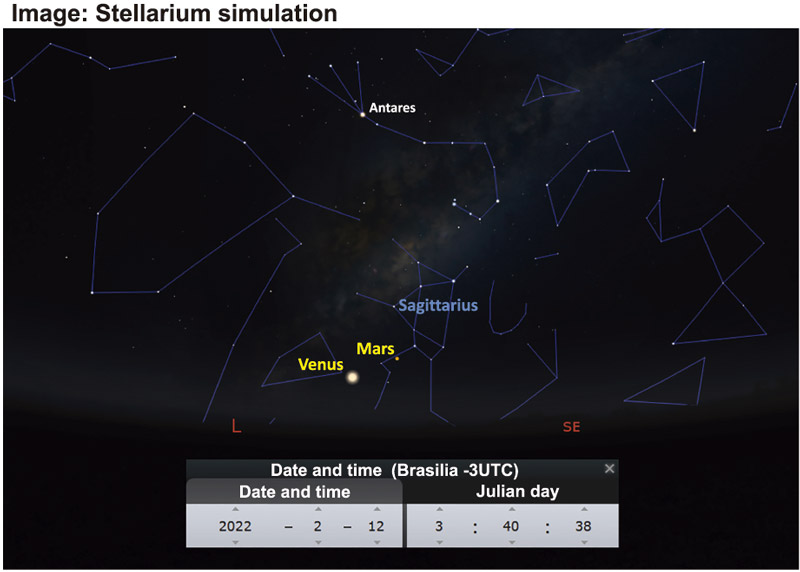
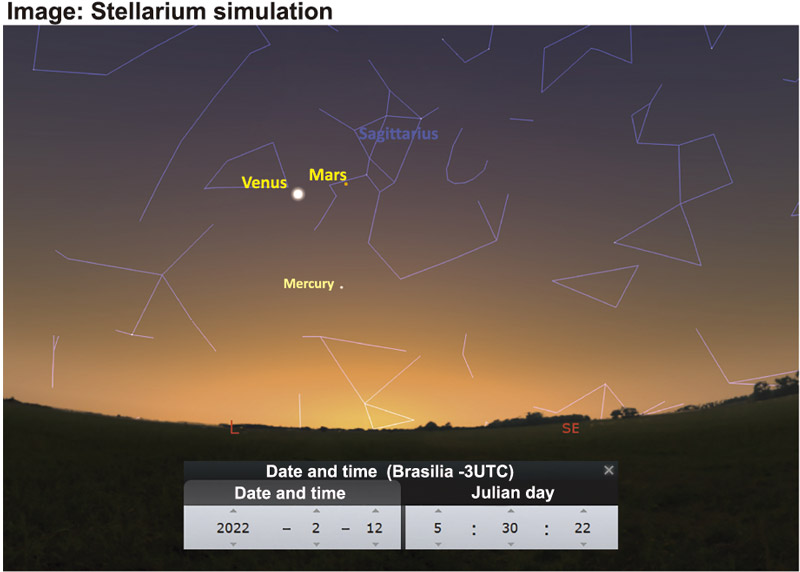
February 27
Conjunction of the Moon, Mars and Venus
At dawn on the 27th, we will have a triple conjunction involving the Moon, Mars and Venus.
The Moon will pass at 8°4′ south of Venus and 3°3′ of Mars.
Observation of this triple conjunction will occur around 3:40 am (Brasilia -3UTC), at 39° (variable angle according to the observer’s geographic location) above the horizon line in the east direction, in the constellation of Sagittarius, until dawn, when its visibility will no longer be possible due to the incidence of sunlight. The Moon will have an apparent brightness of -10.7 magnitude, Venus -4.8 and Mars 1.3.
Observable all over the world.
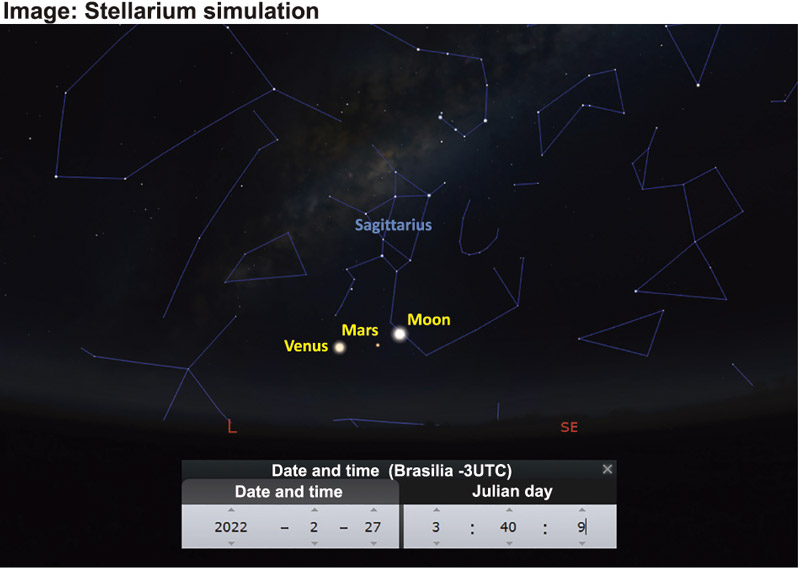
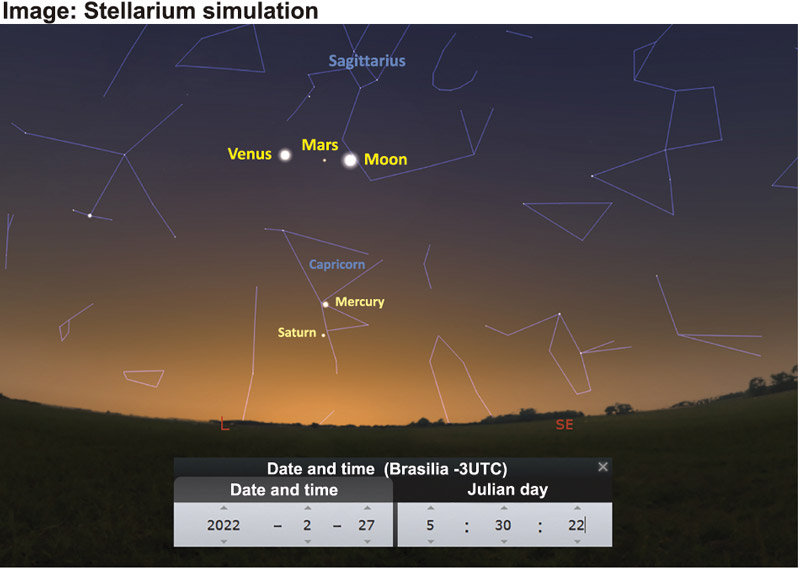
Also on February 27…
We will be able to observe, in the morning twilight, Venus, Mars, Mercury, Saturn and the Moon together in the east direction.
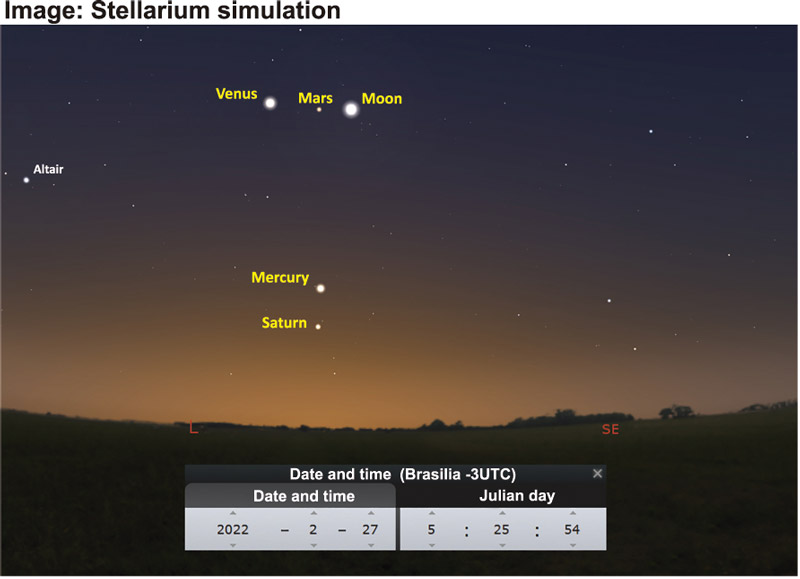
February 16
Maximum Elongation of Mercury
As the planet with the closest orbit to the Sun, tiny Mercury is lost in the brightness of the king star; therefore, it’s in the position of maximum elongation – the greatest angular distance from the solar disk – that it is most visible, and this occurs only a few weeks a year.
At sunrise, on February 16, Mercury will reach its greatest angular separation from the Sun, 25º above the horizon west of the Sun, that is, at maximum elongation – the greatest this year; and can be observed in the east direction, approximately between 4:30 a.m. and 5:30 a.m. (Brasília -3UTC).
At this time, Mercury will be shining at an apparent magnitude of -0.0 and have 59% of its surface illuminated.
Visible worldwide.
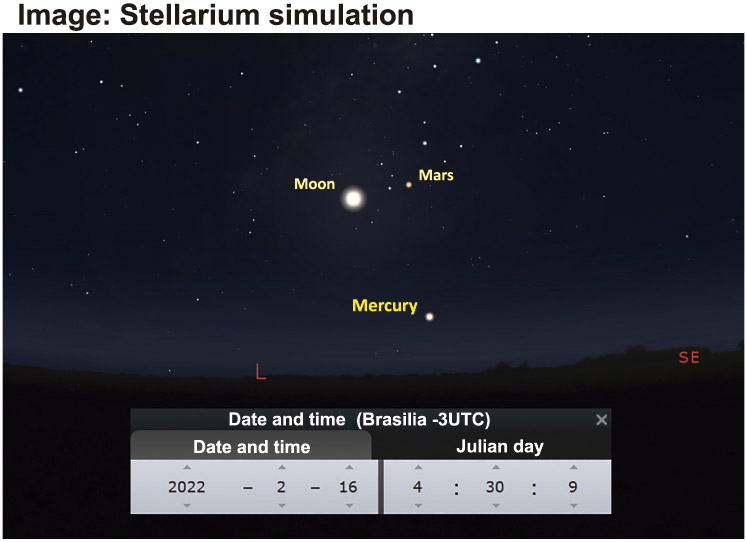
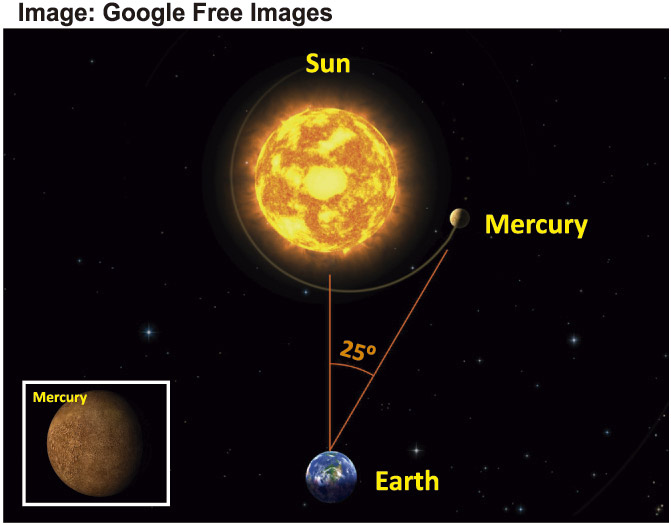
Sources: jpl.nasa.gov/calendar / solarsystem.nasa.gov / in-the-sky.org / Stellarium.org / earthsky.org / derekscope.co.uk / planetary ephemeris – Jet Propulsion Laboratory (JPL) / seasky. org
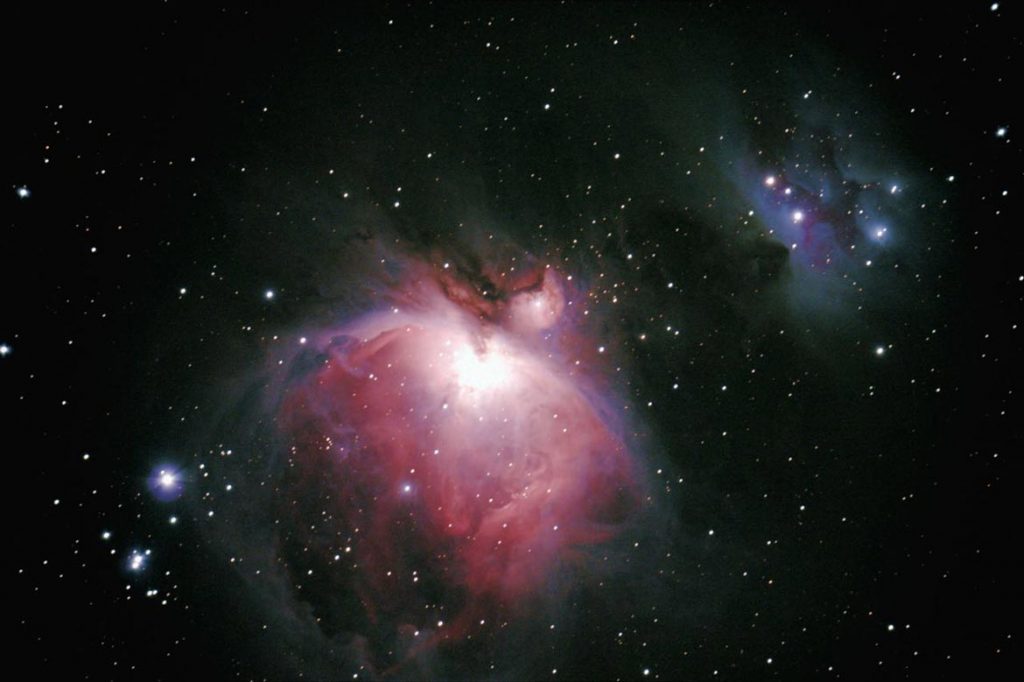
Astronomical ephemerides is a monthly calendar prepared by the Astronomy Sector, which is one of the 12 that make up the PRÓ-VIDA Laboratory Department. In the department, studies, research and scientific experiments related to various themes are developed, as well as field activities and lectures.

Astronomical ephemerides is a monthly calendar prepared by the Astronomy Sector, which is one of the 12 that make up the PRÓ-VIDA Laboratory Department. In the department, studies, research and scientific experiments related to various themes are developed, as well as field activities and lectures.

